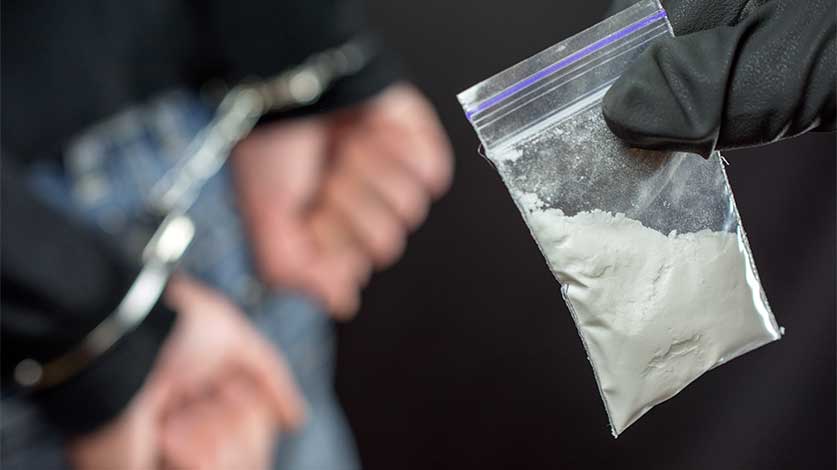Illicit Drug Abuse In Ohio | Types, Risks, & Addiction Treatment Options
Many Ohio residents struggle with illicit drug abuse. Illicit drugs are substances that are illegal to make, sell, or use. People who abuse these substances face a high risk of overdose and addiction. If you or someone you love feels unable to stop using illicit drugs, it’s important to seek professional help.

In 2020, 5,204 Ohio residents died of drug overdoses. Many of these overdoses involved illicit drugs.
Illicit drugs (also called illegal drugs) are psychoactive substances that are illegal to make, sell, or use. They are often highly addictive. Here’s what you should know about illicit drug abuse and addiction in Ohio.
Types Of Illicit Drugs
Many different illicit drugs are abused among Ohioans. The three main types of illicit drugs are depressants, stimulants, and hallucinogens.
Depressants
Depressants are substances that slow down your central nervous system. They make you feel sleepy and relaxed. In some cases, they also cause euphoria (intense joy).
According to the Substance Abuse and Mental Health Services Administration (SAMHSA), the most commonly abused illicit depressants include:
- heroin, a semi-synthetic opioid made from the natural opioid (or opiate) morphine
- gamma-hydroxybutyrate (GHB), a sedative drug that’s often called a “date rape drug” because many sexual predators have used it to incapacitate victims
- flunitrazepam (brand name Rohypnol), a benzodiazepine that has no accepted medical use in the United States
Cannabis (marijuana) is also sometimes considered a depressant drug, though it has stimulant and hallucinogenic effects as well.
In addition, many drug traffickers illicitly manufacture the prescription opioid fentanyl.
Fentanyl is one of the most powerful depressant drugs. According to the Centers for Disease Control and Prevention (CDC), it’s up to 50 times stronger than heroin. It’s often laced in other illicit drugs and has contributed to numerous overdose deaths.
Stimulants
Stimulants are substances that speed up your central nervous system. They boost your energy, alertness, and concentration. Also, like depressants, they can cause euphoria.
The most commonly abused illicit stimulants include:
- cocaine, a white powder from the coca plant
- crack cocaine, a rock-like substance made from powder cocaine
- methamphetamine, a type of amphetamine made from the decongestants ephedrine and pseudoephedrine
- synthetic cathinones (also called “bath salts”), synthetic drugs that are chemically related to the khat plant
Hallucinogens
Hallucinogens are substances that impact your thoughts, feelings, and sense of your surroundings. They can make you hallucinate, which means you hear, see, or feel things that aren’t actually there.
The most commonly abused hallucinogens include:
- ketamine, a synthetic drug that’s also used as an anesthetic in surgery
- LSD, a clear or white material made from lysergic acid, which comes from a fungus that grows on grains
- MDMA (also called molly or ecstasy), a synthetic drug that first became popular at all-night dance parties (or “raves”)
- mescaline, a natural chemical found in a small cactus called peyote
- PCP, a white powder that was originally created as an anesthetic
- psilocybin, a natural chemical found in certain mushrooms (also called “magic mushrooms”)
Risks Of Illicit Drug Abuse
Illicit drug use poses a variety of health risks. The specific risks depend on the illicit substances involved.
Risks associated with illicit depressant use include:
- impaired judgment
- impaired coordination
- depression
- low blood pressure
- slowed heart rate
- respiratory depression (slow, ineffective breathing), which can be fatal
Risks associated with illicit stimulant use include:
- anxiety
- paranoia
- seizures
- heart attack
- stroke
Risks associated with illicit hallucinogen use include:
- anxiety
- paranoia
- mood swings
- psychosis (a temporary loss of connection with reality)
- bizarre behaviors
ROA-Associated Health Problems
Some illicit drug users face additional risks depending on their route of administration (ROA), or how they use the drugs.
For example, people who inject drugs and share needles have a high risk of infectious diseases like HIV and hepatitis C. Similarly, people who smoke drugs may develop lung problems.
Young People
Some drugs are more dangerous when used by young people. For instance, according to the National Institute on Drug Abuse (NIDA), adolescents who use marijuana may have problems with thinking, learning, and memory. That’s because the drug may hinder brain development.
Substance Use Disorder
All forms of illicit drug abuse can lead to drug addiction. Drug addiction (also called substance use disorder) is a serious disease that makes you feel unable to stop using a drug. Like other diseases, it requires professional treatment.
Addiction Treatment Options In Ohio
If you or someone you love is struggling with addiction, seek help at a drug treatment program. Ohio offers both inpatient programs (meaning you live at a treatment center) and outpatient programs (meaning you live at home and regularly visit a treatment center).
Your doctor can help you determine which option is right for you.
Both inpatient and outpatient programs offer a variety of treatments, including:
- medical detox, in which doctors help you avoid or reduce withdrawal symptoms as you stop using drugs
- mental health counseling, in which a therapist helps you manage drug cravings and improve your overall sense of well-being
- support groups, in which you can share your experiences with other people in recovery
- aftercare planning, in which you and your treatment team plan strategies to reduce your risk of relapse, such as ongoing therapy, journaling, and employment assistance
To learn more about addiction treatment options in Ohio, please reach out to Ohio Recovery Center. Our compassionate healthcare providers offer personalized, evidence-based treatments to help you or your loved one stay drug-free.
- Centers for Disease Control and Prevention https://www.cdc.gov/nchs/pressroom/sosmap/drug_poisoning_mortality/drug_poisoning.htm
- Centers for Disease Control and Prevention https://www.cdc.gov/stopoverdose/fentanyl/index.html
- National Institute on Drug Abuse https://nida.nih.gov/publications/drugfacts/cannabis-marijuana
- National Institute on Drug Abuse https://nida.nih.gov/research-topics/viral-hepatitis
- Substance Abuse and Mental Health Services Administration https://www.samhsa.gov/data/report/illicit-drug-use-tables-prevalence-estimates-11-192-0

